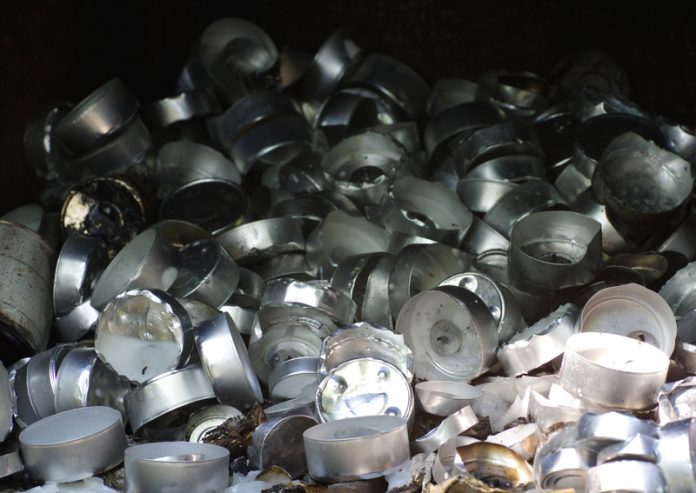A report by Business Waste has shown that, far from being a light-hearted stocking stuffer, candles are one of the worst offenders for Christmas-related landfill
That wonderful time of the year has come and gone – but those thoughtful gifts will soon turn into an environmental headache as millions of candles head to landfill in January.
The candle market in the UK is now worth an eye-watering £90 million, with over a quarter of households now buying them regularly – and with this huge increase in popularity has come an increase in candles, particularly by luxury brands, making a widely-purchased gift during the festive season. Even lower-end retailers such as Aldi jumped on the home fragrance bandwagon, releasing hugely sought-after copies of more expensive scents – even causing scuffles to break out in stores where stock was lower.
So where does this increase in our obsession with lighting candles come from? It seems the Scandinavian trend of ‘hygge’ might have a lot to answer for. The term, which has become synonymous with cosiness, is Danish and represents “creating a warm atmosphere”. This cosy ideal has been widely adopted as a ‘lifestyle goal’, particularly by the Instagram generation, and it is often depicted by luxurious blankets, fairy lights and – of course – twinkling candles.
It’s no wonder, then, that their popularity is soaring – particularly as an on-trend gift last Christmas. However, the environmental impact of this huge uptick in candle sales cannot be underestimated. Candles are often packaged in plastic wrap and even plastic holders – particularly popular tea-light style candles – and recipients are failing in their droves to recycle the remains of their cosy evenings in.
The average candle in retail outlets in the UK burns for six hours – meaning that for just six hours of household decor, the plastic casings of candles could remain in landfill for up to 1,000 years. And plastic isn’t the only culprit – many manufacturers also use glass and metal casings. While the general public has begun to increase its household recycling for the most part, reports suggest that efforts are mostly focused on food packaging, meaning that hundreds of thousands of other household waste items – such as candles – are still heading straight for landfill.
Mark Hall, Communications Director of BusinessWaste.co.uk, cautioned: “As relaxing as a candle-lit room in the depths of winter can seem, households need to be aware that their choices as consumers have a direct impact on the environment. We see novelty candles flood the shelves throughout the run-up to Christmas and while they make a nice, cheap gift, their long term impact is just not worth the brief enjoyment they bring.”
Adding to the poor recycling rates for candle packaging is the fact that paraffin, a key component in most candles available on the High Street, is a by-product of petroleum, which means the increase demand for candles is adding to the already considerable pressure on non-renewable energy sources – and burning them also releases the greenhouse gas, carbon dioxide. Luckily for ethically-minded consumers, beeswax and soy alternatives are available and lessen the impact on the environment.
Hall added: “Of course, many of us like to add a few luxuries to their homes – and there are certainly ways to reduce the impact you have on the environment. If you’re buying candles as gifts, aim to purchase those made from more eco-friendly waxes such as soy or beeswax with longer burn times, to maximise useage before recycling.
“For those of you who received a few scented candles in their stockings this year, please do ensure you’re recycling the remaining plastic, glass or metal afterwards wherever possible – it might be nice to have a festive glow in your living room, but the planet pays the price for it!”












Can you please explain (or retract) the claim that soy has less of an impact on the environment?